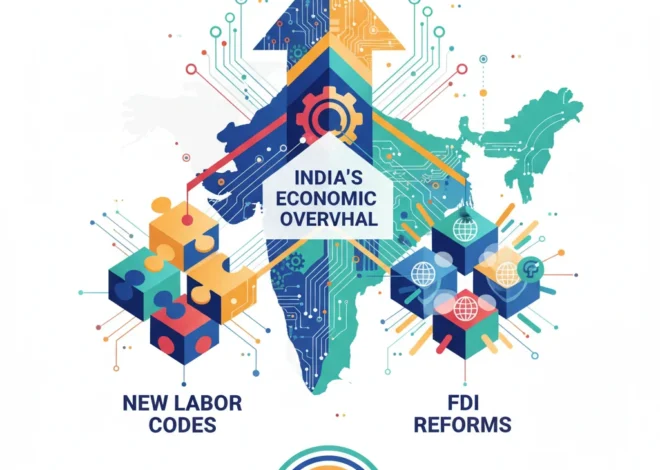
Beyond the Paycheck: Why the Minimum Wage Isn’t the Economic Silver Bullet
The Minimum Wage Debate: A Political Tool or an Economic Burden?
In the theater of modern politics, few policies command the stage quite like the minimum wage. It’s a simple, emotionally resonant concept: ensure a fair day’s pay for a fair day’s work. Politicians often wield it as a powerful symbol of their commitment to the working class, a straightforward solution to the complex problem of poverty. The narrative is compelling and easy to sell. But behind the curtain of this political rhetoric lies a far more intricate economic reality, one that investors, business leaders, and financial professionals must carefully understand.
The push to continually increase the statutory wage floor, while well-intentioned, risks placing an unsustainable burden on the very engine of job creation: the private sector. By framing the minimum wage as the primary cure for low pay, we are effectively asking businesses to perform the role of a national welfare system. This oversimplification ignores the deeper, structural issues within our economy and could lead to unintended consequences that harm the very people the policy aims to help.
This analysis will move beyond the headlines to explore the nuanced economics of wage mandates. We will dissect the real-world impact on corporate finance, investment strategy, and the broader economic landscape, arguing for a more holistic approach to tackling low income that doesn’t place the entire weight on the shoulders of business.
The Rising Tide: How High is Too High?
Governments in developed economies are increasingly ambitious with their minimum wage targets. In the UK, for instance, the government has directed its Low Pay Commission to set a rate equivalent to two-thirds of median hourly earnings. This move would place the UK near the top of the international league tables for minimum wage levels, a significant policy shift. For years, economists have debated the employment effects of minimum wage hikes. The consensus, for a long time, has been that modest increases do not lead to significant job losses. However, the context of today’s global economy is fundamentally different.
We are no longer in a period of benign inflation and steady growth. Businesses are grappling with a cocktail of pressures: soaring energy costs, fractured supply chains, and rising interest rates designed by central banking authorities to cool inflation. In this fragile environment, a mandated, double-digit percentage increase in labor costs is not just another line item; it can be a critical stressor. For sectors with already razor-thin margins—such as hospitality, retail, and social care—it can be the difference between viability and insolvency. These industries are labor-intensive by nature and often lack the pricing power to simply pass on 100% of increased costs to consumers who are also feeling the economic pinch.
The core issue is that a nationally mandated wage floor is a blunt instrument. It doesn’t account for regional economic disparities, the financial health of a specific industry, or the productivity level of a particular business. While a tech firm in a major city can easily absorb such costs, a small café in a struggling town cannot. This one-size-fits-all approach ignores the complex tapestry of our modern economy. The Trillion-Dollar Bug: How AI and New Financial Models Are Fuelling the War on Superbugs
Is Business the New Welfare State?
The fundamental question raised by the source article is a profound one: are we asking private businesses to solve a public policy problem? The challenge of in-work poverty is a societal issue rooted in factors far beyond a company’s payroll, including education, healthcare, housing costs, and childcare. Historically, these challenges were addressed through the tax and benefits system—a mechanism designed to redistribute resources and provide a social safety net.
By relying so heavily on the minimum wage, politicians are effectively outsourcing this social responsibility to employers. It’s a politically convenient move that allows the government to claim a victory for workers without having to raise taxes or make difficult spending decisions. Yet, it places businesses in an unenviable position. They are expected to absorb the costs of societal goals, regardless of their own economic circumstances. As the Financial Times piece notes, this is a significant departure from the original intent of the minimum wage, which was to prevent extreme exploitation, not to be the primary tool for poverty reduction (source).
To better understand this division of responsibility, consider the different tools available to government and business in addressing low household income.
| Tool / Mechanism | Primary Actor | Strengths | Weaknesses |
|---|---|---|---|
| Minimum Wage | Government (Mandated), Business (Pays) | Directly increases earnings for the lowest-paid; simple to communicate. | Blunt instrument; can strain businesses; potential for job losses or reduced hours if set too high. |
| Tax Credits & Benefits | Government | Can be targeted to households most in need (e.g., families with children); funded by a broad tax base. | Complex system; can create benefits traps; requires significant government expenditure. |
| Skills & Training Programs | Government & Business | Boosts worker productivity and earning potential long-term; addresses root causes. | Requires long-term investment; results are not immediate; coordination can be difficult. |
| Productivity Investments | Business | Drives efficiency and creates capacity for higher wages; enhances competitiveness. | Requires capital; may involve disruptive technology like automation or fintech solutions. |
This table illustrates that the minimum wage is just one tool among many. A sustainable strategy for improving living standards requires a coordinated effort, where government focuses on creating a supportive environment through a fair tax system and robust skills infrastructure, while businesses focus on innovation and productivity-led growth.
A More Intelligent Path Forward: Productivity, Skills, and Strategy
If not the minimum wage, then what? The answer isn’t to abandon the concept of a wage floor, but to recognize its limitations and build a more comprehensive strategy around it. The cornerstone of any sustainable increase in wages is an increase in productivity. A worker who produces more value per hour can be paid more without threatening the viability of the business. This is a fundamental principle of economics.
Achieving this requires a multi-pronged approach:
- Investment in Technology and Innovation: Businesses must be encouraged to invest in tools that make their workers more effective. This ranges from better software and machinery to adopting transformative financial technology (fintech) to streamline operations. The government’s role is to create a favorable environment for this investment through tax incentives and reduced regulatory friction.
- A Revolution in Skills Training: A high-wage economy must be a high-skill economy. We need a national commitment to lifelong learning, vocational training, and reskilling programs that align with the needs of modern industry. The current system is often fragmented and underfunded, a point highlighted in critiques of the government’s approach.
- Smarter Government Support: Instead of relying solely on wage mandates, the government should strengthen the social safety net. Well-designed in-work benefits can supplement incomes for those in lower-paying but essential jobs without putting the entire burden on their employers. This creates a partnership model rather than a confrontational one.
Lula's High-Wire Act: Balancing Brazil's Climate Goals with a Multi-Billion Dollar Oil Bet
What This Means for Investors and Business Leaders
The ongoing debate over the minimum wage is more than a political issue; it’s a critical factor in investment analysis and corporate strategy. Navigating this landscape requires foresight and a deep understanding of the underlying economics.
For Investors: When evaluating companies, particularly in sectors like retail, hospitality, and logistics, labor costs must be a primary focus. Look beyond the headline revenue figures. Analyze labor as a percentage of sales and assess the company’s strategy for mitigating wage pressure. Does the firm have strong pricing power? Is it investing in automation and technology to boost productivity? Companies that can answer these questions effectively are better positioned to thrive in a high-wage environment. A passive approach to this trend could be detrimental to any investment portfolio heavily weighted in these sectors.
For Business Leaders: The imperative is to get ahead of the curve. Waiting for government mandates and then reacting is a losing strategy. Proactive leaders should be relentlessly focused on boosting productivity. This means investing in employee training to create a more skilled and versatile workforce. It means embracing digital transformation, from back-office financial technology to customer-facing platforms. It also means developing a clear narrative for investors and stakeholders that explains how the business is building a resilient model that can support higher wages through higher value creation, not just thinner margins.
Conclusion: A Shared Responsibility
Ensuring that work provides a path to a decent life is a laudable and essential goal. However, placing the full responsibility for achieving this on the minimum wage is a flawed strategy. It asks businesses to solve a societal problem with a tool that is too blunt for the task, especially in today’s challenging economic climate. It is a political shortcut that avoids the harder, more necessary work of structural reform.
A truly prosperous economy is built on a foundation of shared responsibility. Businesses must commit to investing in their people and in the technology that drives productivity. Government must create a competitive environment for investment and provide a robust social safety net and a world-class skills infrastructure. By shifting the focus from the single lever of the minimum wage to this broader, more collaborative agenda, we can build an economy that delivers sustainable prosperity for everyone.


